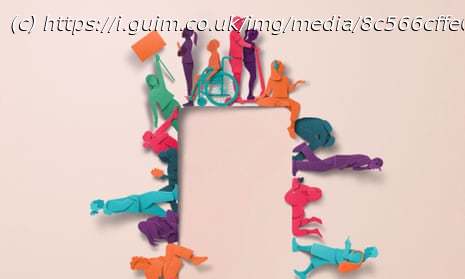Jonathan Haidt’s bestselling book blames social media for a decline in teenage mental health. But is he right?
When I was 13, two of my friends were arrested for shoplifting. Along with two boys in our year, they had decided to bunk off school – our suburban grammar school renowned for its academic excellence – and get the train to a shopping centre nearby. The day had been going well until they reached HMV, where a security guard asked them about the CDs they had hidden in their coats. Cue a call to the police, and some time in a cell at the local police station. By the end of the day, news had travelled to the rest of us via an SMS on our Nokia 3310s and we gathered at one of our houses to discuss the situation. Most of us were crying.
It was but one dramatic moment in a lawless year. In year 7 we had been a fairly risk-taking group, but in the spring of year 8, a new girl joined our school and her arrival set things on fire. Beside the shoplifting habit, there was a lot of alcohol, stolen from parents’ cupboards or bought for us by strangers on the high street or by older siblings. We drank where teenagers have always drunk: in parks at night or during unsupervised parties at home. Blacking out was not uncommon, and more than once someone ended up in A&E. There was a lot of smoking, too, cigarettes and weed, and a lot of arguing about boys and each other (more crying there, too).
I remember going through all of this with a sort of stunned horror: confused about why it was all happening, terrified that something would go wrong or I’d get into trouble, but desperate to fit in with my friends. In hindsight, our behaviour that year was so typically teenage as to be cliched, almost banal, but that didn’t make it any easier to live through. Year 8, for its sheer volatility combined with our immense vulnerability, was one of the wildest years of my life.
Fast forward 23 years, and a new public narrative about adolescents has taken hold. The psychologist Jonathan Haidt’s new book, Anxious Generation, focuses on a significant problem: rates of anxiety and other mental health problems are increasing in this generation of teenagers. He links this to the emergence of social media and a decline in exploratory play, and says that we can solve the problem by banning smartphones for under-14s and social media for under‑16s. There is a huge appetite for this narrative: political leaders and grassroots parent-led groups alike are calling for bans. Haidt’s book has gone straight to the top of bestseller lists because, well, his argument just sort of feels right – look at all those teenagers glued to their phones, listen to the accounts of self-harm images, cyberbullying and sexting gone wrong. They’re suffering, and of course it’s their phones.
Except that psychological science (and life) is rarely this neat. Many other changes have coincided with the increase in teenagers reporting rising mental health problems: for example an increase in obesity, an increase in academic pressure and the Covid pandemic, all of which are associated with worse mental health. Haidt’s theory about social media is relevant, but it’s likely to be one piece of a large and complicated puzzle.
There is also the critical and often overlooked fact that public discourse around mental health has transformed. Adolescents today are taught about mental health in schools and universities and inundated with public awareness campaigns. This shift will itself have contributed to the increase in reported rates of mental health problems – because more teenagers are now accurately seeking help, but also because others will mislabel lower levels of distress as a mental health problem: both of these will bump up overall rates. I am certain that, had my friends and I been given anxiety questionnaires to fill out in year 8, our scores would have been off the scale. But teenage mental health wasn’t measured much then, so it didn’t make the headlines.
When trying to understand the cause of adolescent mental health problems, current conversations pursue what is new and different about this generation. This matters to an extent – we are trying to understand an apparent increase, after all – but focus on the new too much and we risk missing a vital point: being an adolescent is, and always has been, really, really hard.
I recently wrote a book about this period of life, and alongside descriptions of the latest research, I included plenty of interviews with adults looking back on their own teenage years. I was struck by how powerful and self-shaping their adolescent memories were even decades later. But I was also fascinated by how similar the struggles were across the generations, whatever age people were now. A 48-year-old interviewee, who went to an all-boys school he likened to Lord of the Flies, summed it up thus: “My adolescence was full of anxiety, just like everyone else’s.






